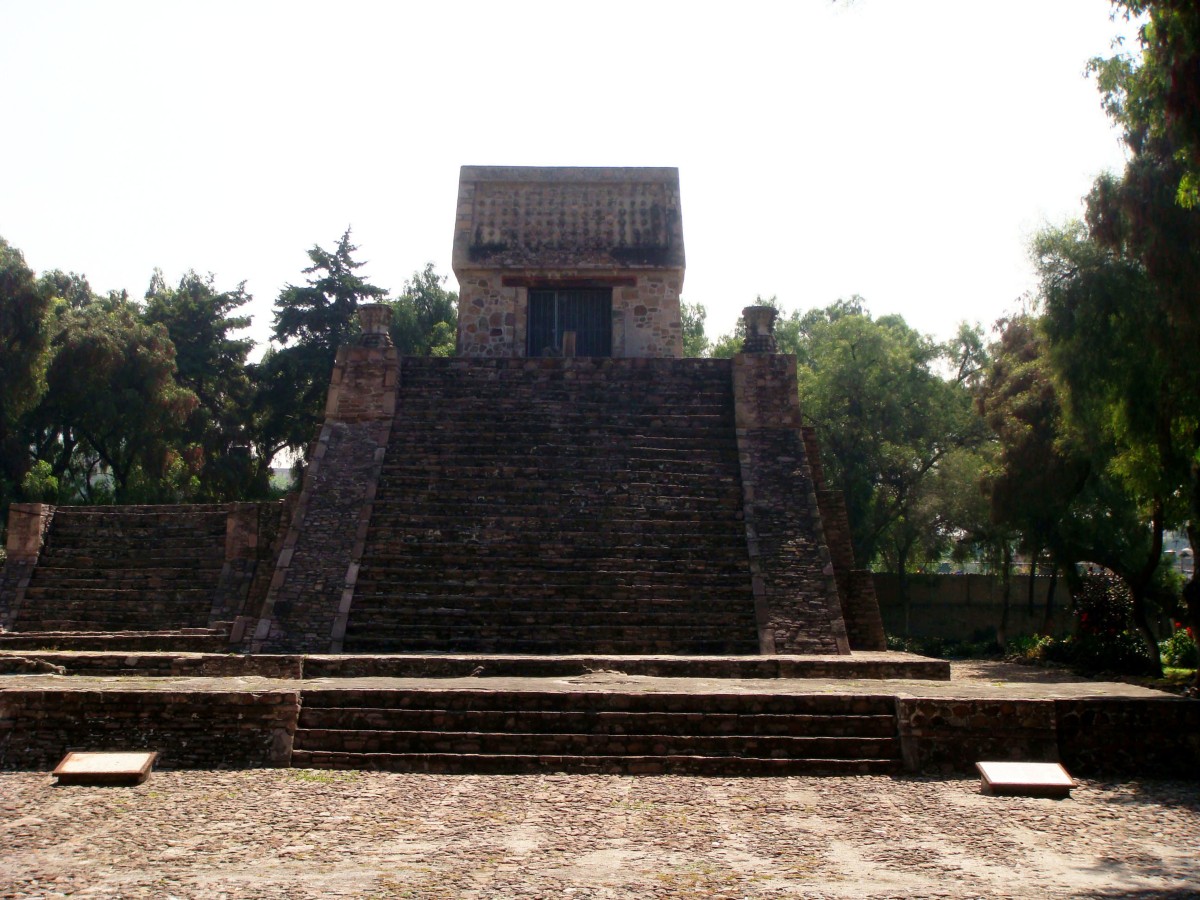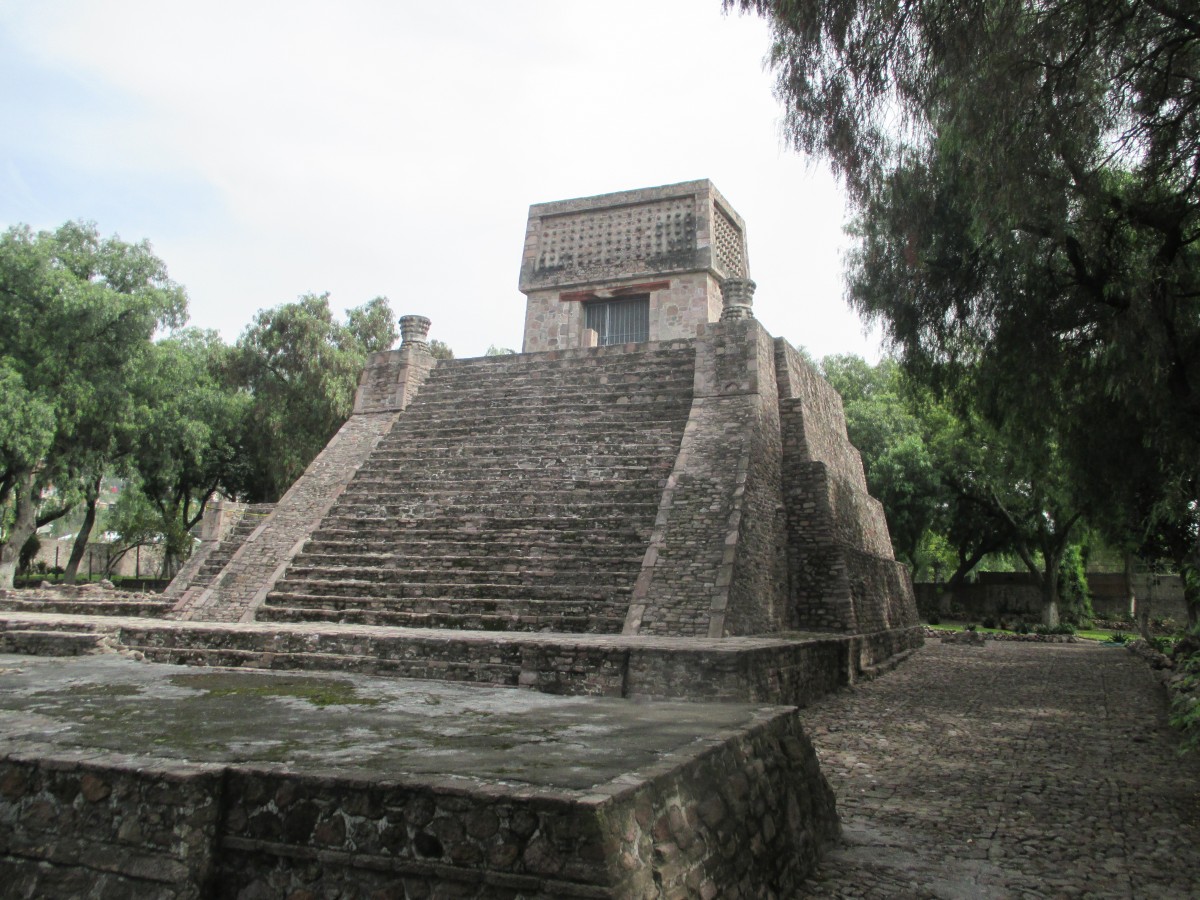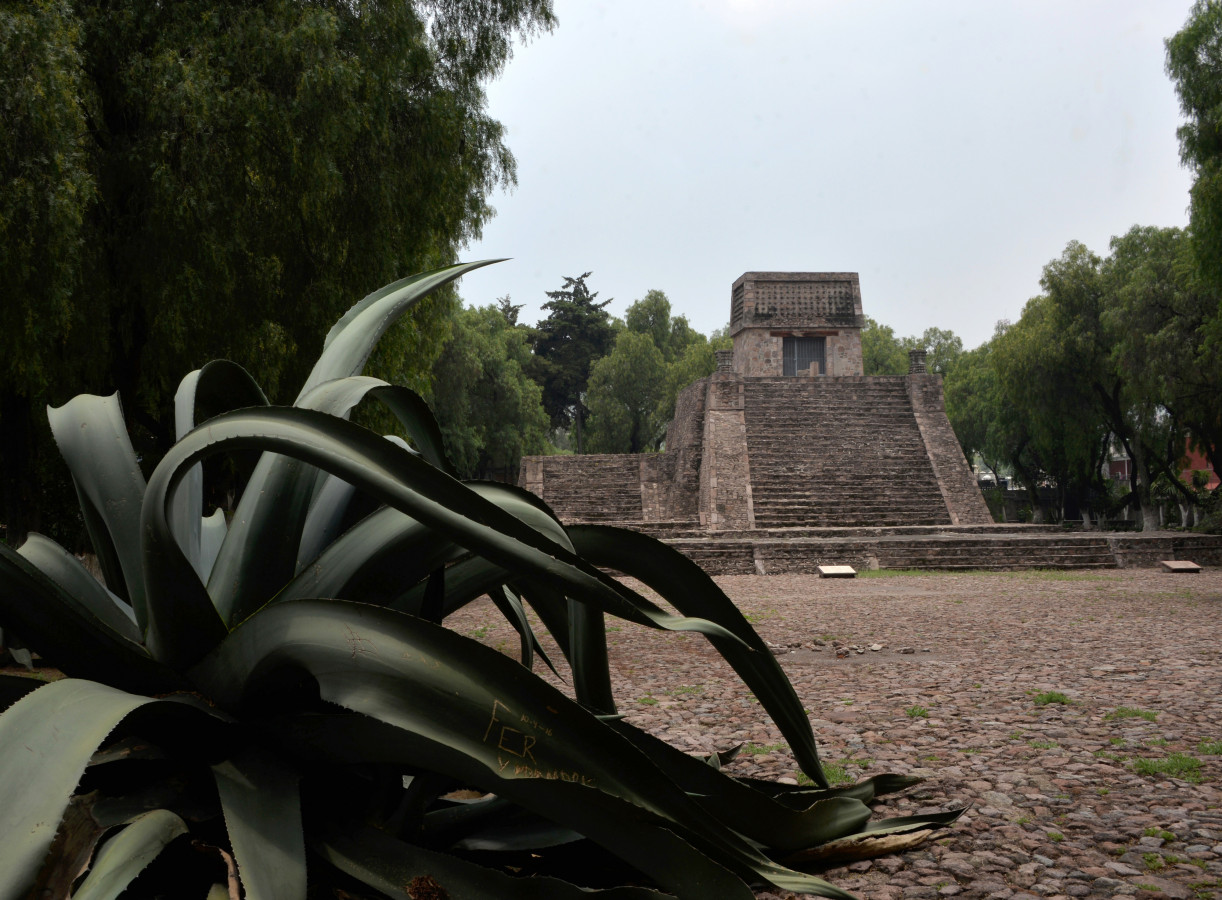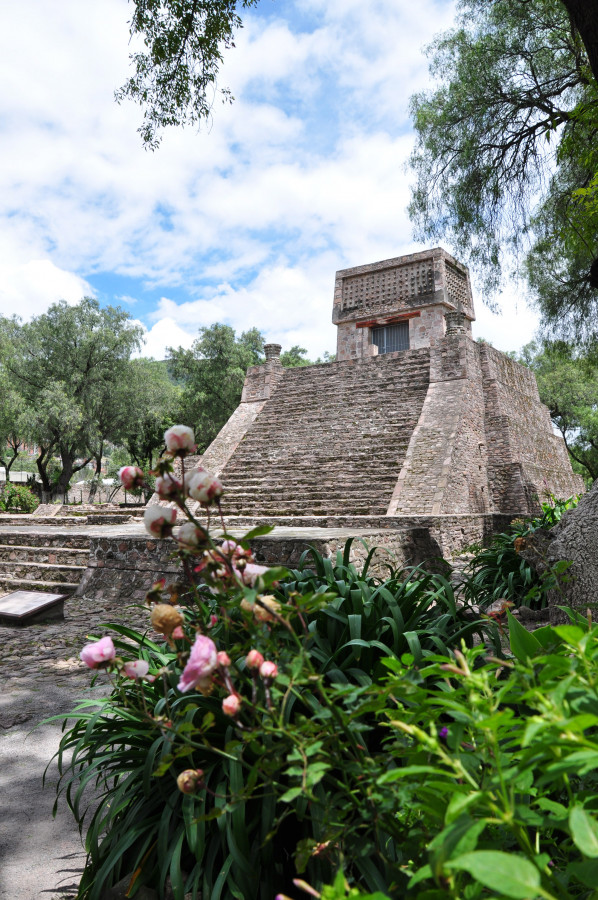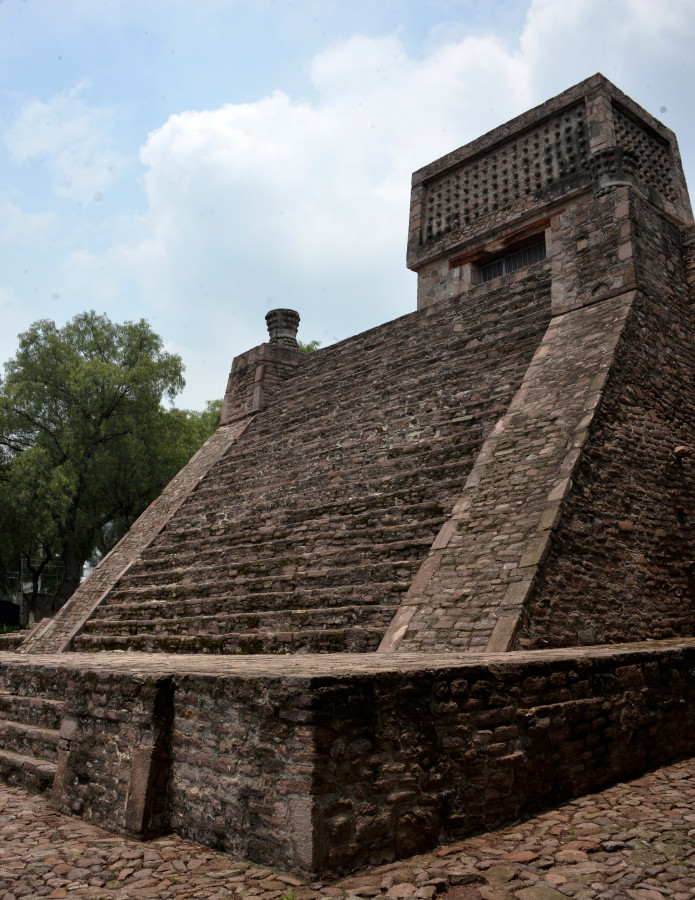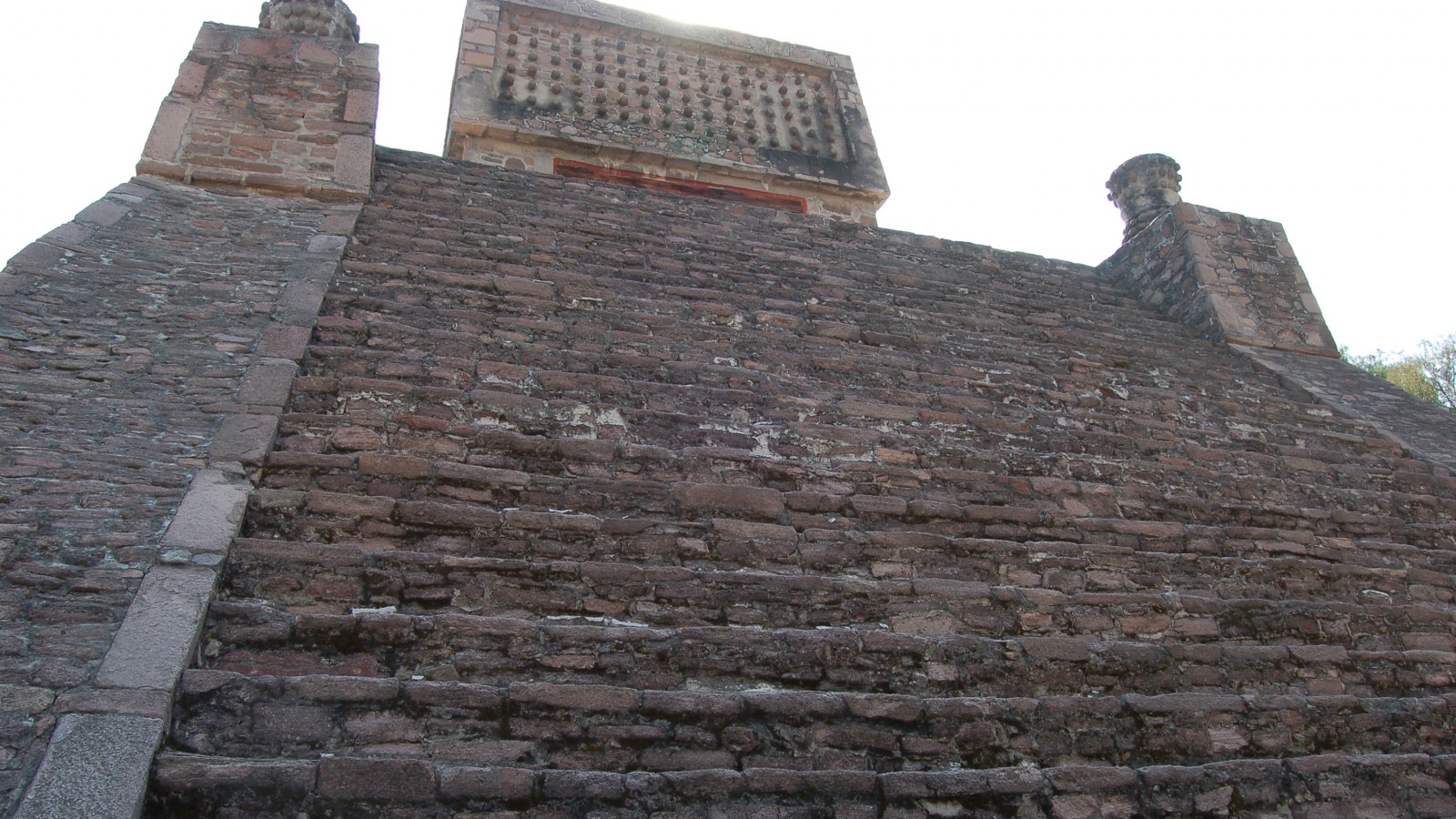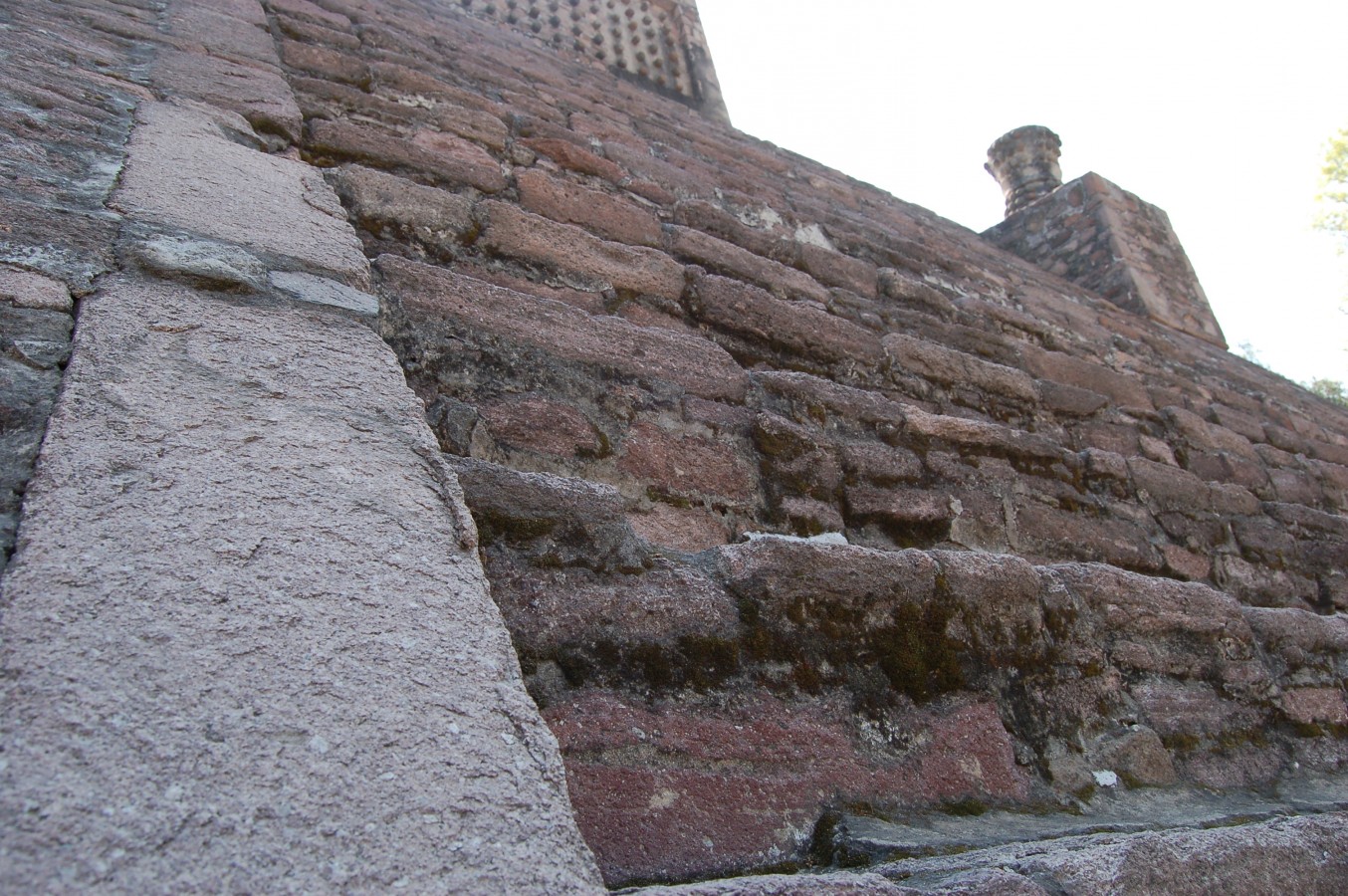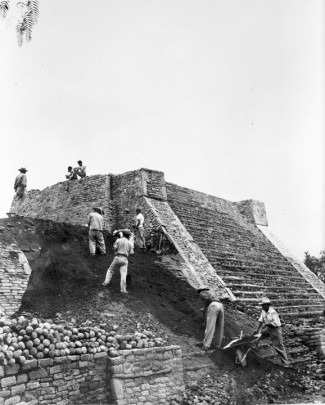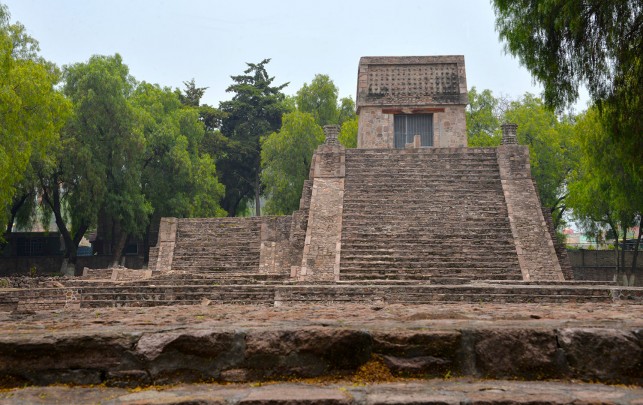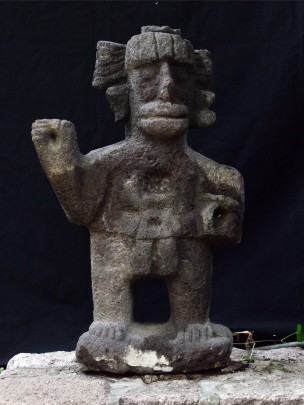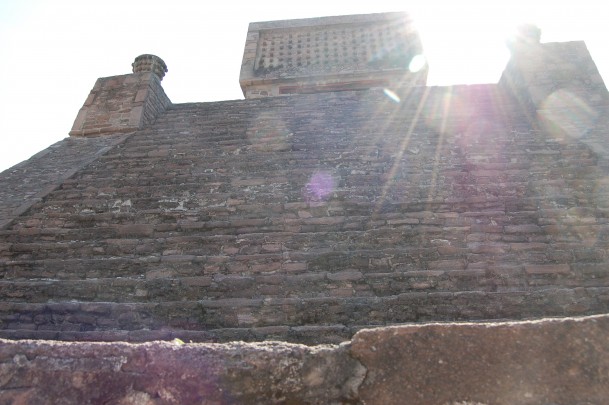Santa Cecilia Acatitlán
Among the canes
An important lakeside site dependent on Tenayuca, the Chichimec capital. There is an important reconstructed teocalli (pyramid) surmounted by a temple. The original preceded the building of the Great Teocalli of Tenochtitlan. It also houses a large collection of stone sculptures in the Mexica tradition.
About the site
The Santa Cecilia Acatitlán archeological site is in the center of the town of the same name, in the municipality of Tlalnepantla, State of Mexico. The name Acatitlán comes from the Nahuatl and means the place “among the reeds.” The history of Acatitlán can be traced back to 1180-1200, with the arrival of Chichimec groups coming from the north of the country, who mixed with survivors of the Toltec culture during their migration, which is why they are known as Toltec-Chichimecs. Acatitlán was founded by the captains who accompanied Xolotl.
The first archeological investigations of the site were in 1923 and 1924. In 1961 the architect Eduardo Pareyón Moreno excavated and consolidated the sole pyramid building, crowned by a temple. It has a stairway with balustrades and in the upper part there are two large incense burners. This pyramid was part of the place’s ceremonial center.
Excavations have uncovered the presence of four building stages, the last of which has only left the remains of the stairway. The south side of the pyramid’s third building stage was reconstructed, including the temple, whose roof was formed of sloping slabs decorated with smooth studs. The restoration was based on models made in clay from the pre-Hispanic era. To the north side of the pyramid we can see the structure of the second building stage without a temple.
The Dr. Eusebio Dávalos Hurtado Museum of Mexica Sculpture is adjacent to the site. The exhibition is in a late-nineteenth-century house and houses a collection of Mexica ceramic and stone sculptures. It also has three galleries recreating the living area, dining area and kitchen of a country house of this period.
The first archeological investigations of the site were in 1923 and 1924. In 1961 the architect Eduardo Pareyón Moreno excavated and consolidated the sole pyramid building, crowned by a temple. It has a stairway with balustrades and in the upper part there are two large incense burners. This pyramid was part of the place’s ceremonial center.
Excavations have uncovered the presence of four building stages, the last of which has only left the remains of the stairway. The south side of the pyramid’s third building stage was reconstructed, including the temple, whose roof was formed of sloping slabs decorated with smooth studs. The restoration was based on models made in clay from the pre-Hispanic era. To the north side of the pyramid we can see the structure of the second building stage without a temple.
The Dr. Eusebio Dávalos Hurtado Museum of Mexica Sculpture is adjacent to the site. The exhibition is in a late-nineteenth-century house and houses a collection of Mexica ceramic and stone sculptures. It also has three galleries recreating the living area, dining area and kitchen of a country house of this period.
Did you know...
- The reconstruction of the south side of the pyramid gives a clear impression of a pre-Hispanic temple of the Late Postclassic.
- The impressive Mexica sculptures displayed in galleries 1 and 2 are proof that the sculptors attained a high level of mastery. The sculptures of Ehecatl and Tlaltecutli stand out.
Practical information
Temporarily closed
Tuesday to Sunday from 10:00 to 16:00 hrs.
$75.00 pesos
Se localiza en el municipio de Tlalnepantla de Baz, Estado de México.
From Mexico City, take Calzada Industrial Vallejo or Eje Central Lázaro Cárdenas to Tenayuca, and then follow the Santa Cecilia-San Rafael Avenue to the town of Santa Cecilia.
Services
-
+52 (55) 2125 9070
-
This email address is being protected from spambots. You need JavaScript enabled to view it.
Directory
Jefe de la Zona Arqueológica
Francisco Antonio Osorio Dávila
This email address is being protected from spambots. You need JavaScript enabled to view it.
+52 (722) 213 9581

